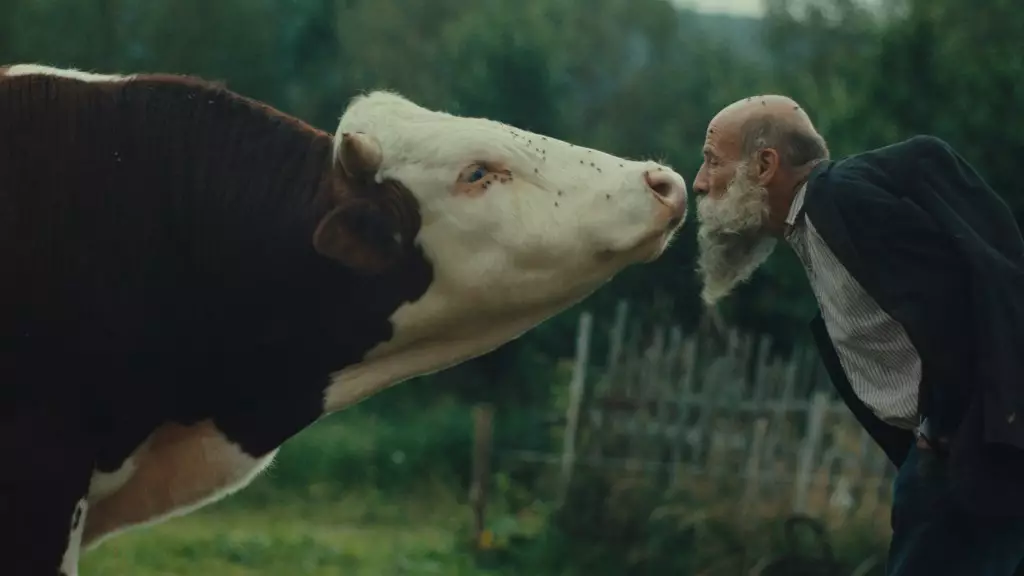In a cinematic landscape often dominated by polished narratives and sensationalized stories, a new wave of documentary filmmaking emerges—one that champions raw authenticity over Hollywood gloss. The recent acclaimed film “Better Go Mad In The Wild” exemplifies this shift by plunging into the lives of two elder brothers living in the Bohemian Forest, challenging viewers to see beyond surface appearances and societal expectations. Unlike traditional documentaries that seek to frame their subjects within a compelling backstory or dramatic arc, this film opts for a more understated approach. It invites audiences into an unfiltered realm, where the beauty of imperfection and the dignity of simply being oneself take center stage.
The film’s resonance lies in its refusal to conform to the conventions of exposition. It offers snippets—glimpses into the brothers’ philosophies, their candid banter, and their idiosyncratic routines—rather than a scripted narrative. This authenticity is both its strength and its limitation. While it provides a refreshing departure from overly structured storytelling, it also risks leaving viewers craving a deeper understanding of its protagonists. Nevertheless, this choice underscores an important advocacy: that the essence of a human being cannot always be neatly summarized or explained; sometimes, it must be observed and experienced firsthand.
Contrasting Artistic Inspirations: From Grey Gardens to Pictures of the Old World
The film draws evocative comparisons to both “Grey Gardens” and “Pictures of the Old World,” highlighting how different cinematic traditions interpret the marginalized and the forgotten. The shadow of the Maysles brothers’ classic looms large, with “Better Go Mad In The Wild” echoing its themes of decayed elegance and resilience amidst neglect. Yet, unlike “Grey Gardens,” which centered on eccentric women subsisting in a dilapidated mansion, this documentary explores a more rugged, rural independence, emphasizing the brothers’ self-sufficiency and philosophical outlook.
Simultaneously, the influence of Dušan Hanák’s “Pictures of the Old World” cannot be overlooked. Hanák’s film challenged political dogma by subtly portraying rural life beneath the veneer of propaganda, revealing an undercurrent of resilience amid hardship. Remo’s work navigates similar terrain but adds layers of historical activism; it acknowledges the brothers’ clandestine role in the Velvet Revolution, a pivotal moment in Czech history. However, the film eschews heavy-handed narration, instead allowing these revelations to ripple through the narrative subtly, fostering a more intimate connection that questions whether a straightforward exposition is always necessary for truth-telling.
The Complexity of Eccentric Fortitude
At the heart of the film are the brothers themselves—rough around the edges, yet deeply contemplative. Their living conditions seem to defy modern sensibilities: a rundown farmhouse, makeshift partitions, and daily routines infused with both absurdity and tenderness. An outsider might perceive them as relics or eccentricities, but closer inspection reveals a profound sense of purpose and contentment rooted in their rejection of societal norms.
Their dialogues oscillate between mundane bickering and poetic musings, exposing a nuanced understanding of life that challenges stereotypes. One brother’s naked strolls and playful interactions with a cow juxtapose starkly with occasional outbursts of frustration, illustrating the duality of their existence. They are remnants of a bygone era, yet their autodidactic history and political activism suggest an indomitable spirit that refuses to be forgotten or dismissed. This duality raises an essential question: Is eccentricity inherently superficial, or can it serve as a vessel for true authenticity?
Limitations of the Documentary’s Approach
Despite its strengths, the film reveals a certain reluctance or inability to fully unpack its subjects’ inner worlds. By opting for restraint, it teeters on the edge of superficiality, offering moments of humor and charm but falling short of delivering a comprehensive portrait of their existential journey. The minimal exposition on their past deeds, such as their involvement in the Velvet Revolution, leaves a curious void—an unfulfilled yearning for a deeper narrative that contextualizes their current life choices.
Furthermore, the film’s focus on the eccentricities—cabbages, bovine antics, and drunken banter—though engaging, risks overshadowing the underlying themes of resilience, societal critique, and historical significance. The playful nudity and candid moments may induce a sense of levity, but they also threaten to trivialize the profound questions about aging, purpose, and societal marginalization that such lives embody. The narration from Nandy the bull, charming as it is, adds a layer of whimsy that can feel disconnected from the weightier realities at play.
A Personal Reflection on Humanity and Society
This film ultimately serves as a mirror, reflecting society’s obsession with youth, productivity, and appearance. It challenges viewers to reconsider notions of value and dignity, reminding us that life’s richness often resides beyond the reach of societal standards. The brothers’ unapologetic existence—living amidst decay, wrapped in philosophical discourse and rustic routines—underscores a powerful message: that authenticity and inner peace are attainable through acceptance of one’s circumstances.
It prompts a crucial critique of modern culture’s tendency to dismiss the old, the unconventional, and the marginalized. These figures, with their unfiltered humor and resilient spirits, embody a form of rebellion against superficiality. Their lives, though unconventional, carry a quiet dignity that questions the very fabric of societal norms. Engaging with such stories demands a willingness to look beyond appearances and embrace the imperfect, often messy realities that define human existence.
This exploration isn’t merely about showcasing eccentric individuals remotely detached from mainstream life—it’s about challenging us to find beauty in the overlooked and wisdom in the unpolished. A finer film might have delved deeper into the psychological and emotional layers of these men, but even in its current form, it invites us to rethink what it means to live authentically and courageously in a world that values superficial perfection over genuine presence.

